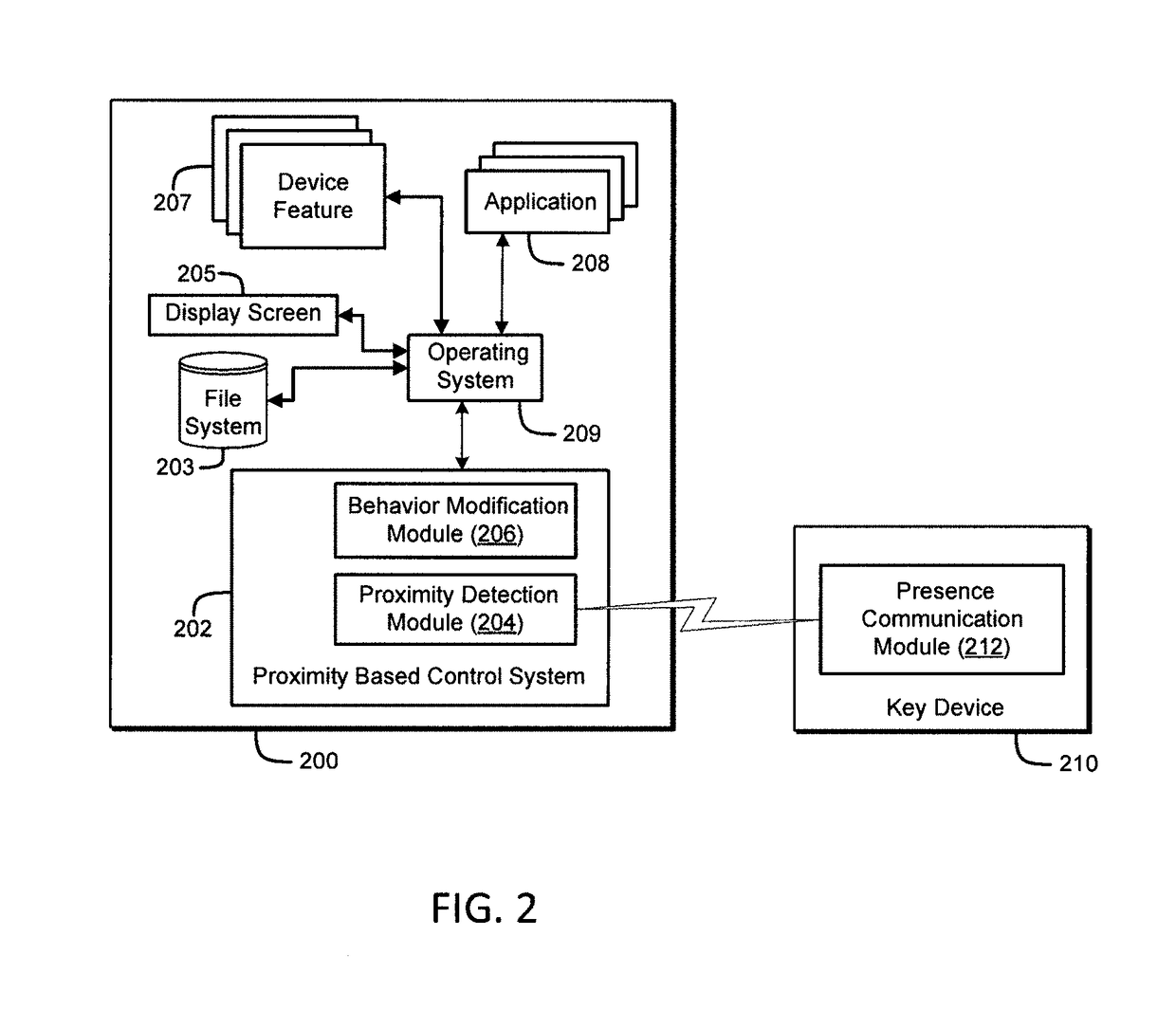Method for performing device security corrective actions based on loss of proximity to another device
a technology of proximity and corrective action, applied in the field of information technology, can solve the problems of increasing the time it takes to enter, affecting the security of the device, and the evolution of the mobile electronic communication device, so as to reduce minimize the inconvenience of users, and cost efficiently
- Summary
- Abstract
- Description
- Claims
- Application Information
AI Technical Summary
Benefits of technology
Problems solved by technology
Method used
Image
Examples
Embodiment Construction
[0027]FIG. 1 is a simplified block diagram of a computer network 100 that includes a mobile communication device 101, a server system 111, and other electronic client devices 140a-140e, coupled to a communication network 121 via a plurality of communication links 130. Communication network 121 may be comprised of many interconnected computer systems and communication links. Communication links 130 may be hardwire links, optical links, satellite or other wireless communications links, wave propagation links, or any other mechanisms for communication of information. Various communication protocols may be used to facilitate communication between the various devices shown in FIG. 1. These communication protocols may include TCP / IP, HTTP protocols, wireless application protocol (WAP), vendor-specific protocols, customized protocols, Internet telephony, IP telephony, digital voice, voice over broadband (VoBB), broadband telephony, Voice over IP (VoIP), public switched telephone network (P...
PUM
 Login to View More
Login to View More Abstract
Description
Claims
Application Information
 Login to View More
Login to View More - R&D
- Intellectual Property
- Life Sciences
- Materials
- Tech Scout
- Unparalleled Data Quality
- Higher Quality Content
- 60% Fewer Hallucinations
Browse by: Latest US Patents, China's latest patents, Technical Efficacy Thesaurus, Application Domain, Technology Topic, Popular Technical Reports.
© 2025 PatSnap. All rights reserved.Legal|Privacy policy|Modern Slavery Act Transparency Statement|Sitemap|About US| Contact US: help@patsnap.com



